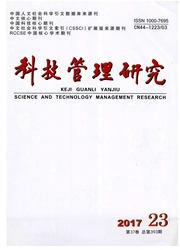

 中文摘要:
中文摘要:
以江西省井冈山市为研究区,以1994年、2007年两景遥感影像、1996~2005年土地利用变更调查资料、统计年鉴和实地调查资料为主要数据源,借助遥感和地理信息系统技术比较准确地调查研究区1994年、2007年的土地利用空间格局及其变化的时空特征。采用定性与定量分析相结合的方法,对井冈山市土地利用变化的人文驱动因素进行系统分析。分析结果表明,影响井冈山市土地利用变化的关键人文因子可以归纳为旅游产业发展因子、农业发展因子、工业发展因子、林业发展因子和人口增长因子。上述人文因子对井冈山市土地利用变化的影响和强度各不相同,其中旅游产业发展因子与工业发展因子的影响作用较大,林业发展因子、农业发展因子和人口增长因子的影响作用相对较小。
 英文摘要:
英文摘要:
In this paper,we take Jinggangshan city as the study area by adopting two remote sensing imagery of 1994 and 2007,the survey data of land use change from 1996 to 2005,the statistical yearbook and field survey data as the main data source,with the help of remote sensing and geographic information systems technology,to have an accurate survey of the land use spatial pattern and land use changes of 1994 and 2007.We take advantage of qualitative and quantitative methods to make a thorough and careful study on the humanities factors that affect the land use changes in Jingangshan.The results of qualitative analysis show that agriculture,tourism,industry,forestry and demographic factors are 5 key humanities factors which impose impacts on land use changes in Jinggangshan city.These factors'intensity and effect varies,of which the tourism and industry factors play a major role,while forestry,agriculture and population factors are relatively small roles.
 同期刊论文项目
同期刊论文项目
 同项目期刊论文
同项目期刊论文
 Understanding of the geological and geodynamic controls on the formation of the South China Sea: A n
Understanding of the geological and geodynamic controls on the formation of the South China Sea: A n Platinum-group elemental geochemistry of mafic and ultramafic rocks from the Xigaze ophiolite, south
Platinum-group elemental geochemistry of mafic and ultramafic rocks from the Xigaze ophiolite, south 期刊信息
期刊信息
